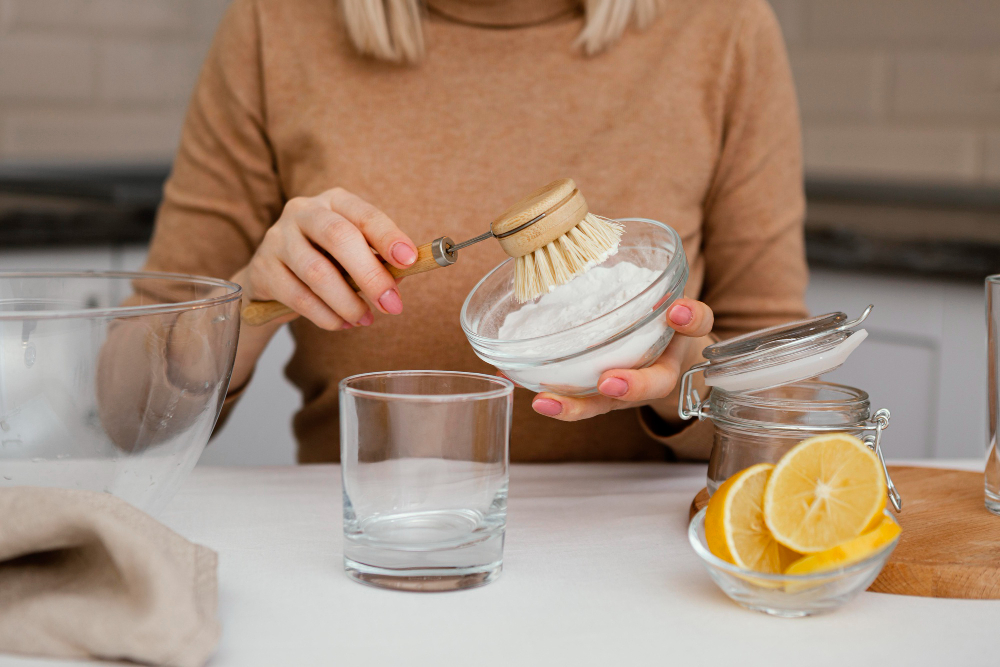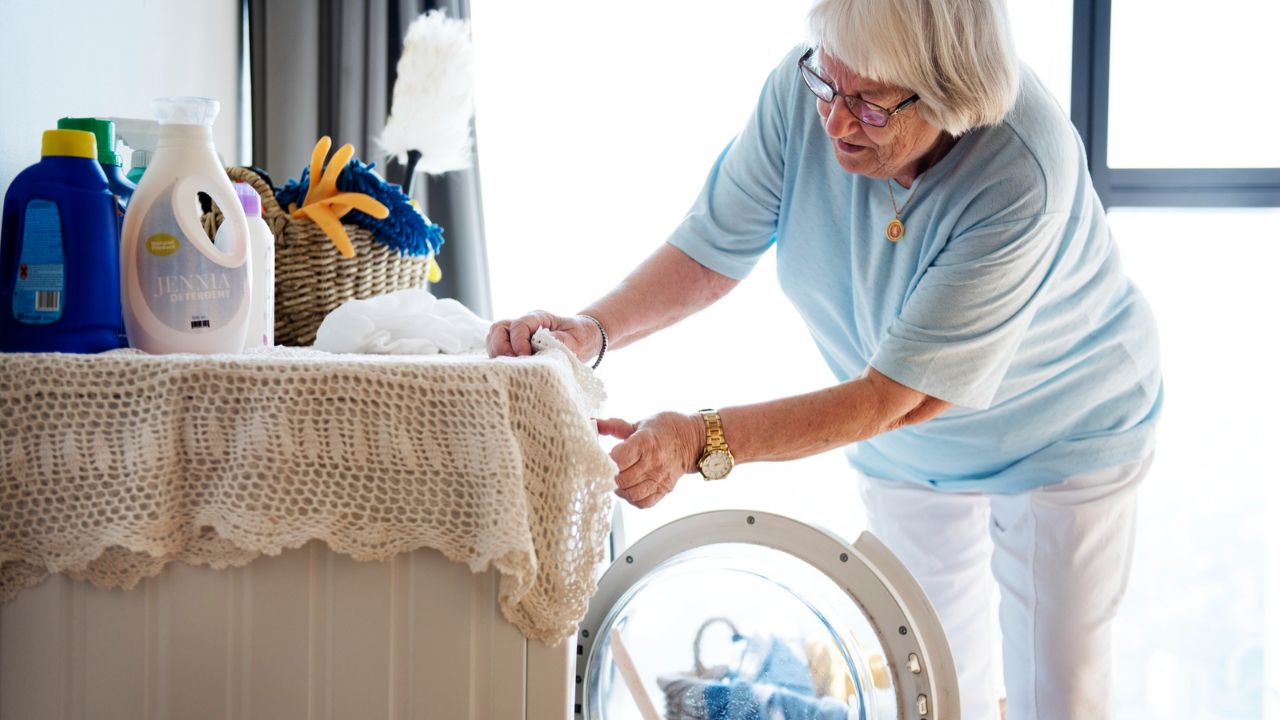If your grandma swore by tossing a lemon into the wash, you are not imagining it. Old-school laundry guides praised lemon’s acidity for brightening whites and killing odors. The problem is not what it does to fabric in the short term. It is whaat repeated acid does to a modern washing machine’s guts over time.
Below is a simple, teen-friendly breakdown of what that citrus trick really does, why experts now say to skip it, and what to use instead for fresh, bright, soft laundry without risking expensive repairs.
The old-school move: lemon in the wash
The classic hack goes like this: slice a lemon or pour in lemon juice, then run your whites. Acid helps loosen minerals, reduce dinginess, and cut odor. People also tried the same idea with household vinegar, another mild acid.
That approach made sense back when machines were simpler and replacement parts were cheap. Today’s washers rely on complex seals, hoses, and sensors. What used to be a harmless kitchen shortcut is now a regular bath of acid for rubber and soft metal parts inside the machine. Over months and years, that can turn into leaks and performance issues that are way more annoying than a dingy T-shirt.
Why experts say to skip lemons and routine vinegar

Cleaning scientists, appliance pros, and consumer testers keep repeating a core message. Acids may brighten, but routine exposure is rough on washers. Good Housekeeping’s cleaning lab has warned that putting lemon slices or juice into the drum works like vinegar, which is to say it can degrade internal parts with repeated use. The same lab has published separate guidance cautioning against routine vinegar in the wash for the very same reason.
Consumer Reports puts the warning in plain English. Constant acid can eat at gaskets and hoses to the point of failure, and front-load machines are especially vulnerable. Washer makers echo it in their care pages, noting that vinegar’s acidity can corrode rubber elements and other components over time. If you need a one-line rule, use this: saving a shirt should not cost you a washer.
If you do reach for traditional bleach sometimes, remember the biggest safety rule in laundry. Never mix bleach with vinegar or any other acid, because that releases dangerous chlorine fumes. Keep products separate, and run a plain water cycle between different chemistries if you are troubleshooting multiple issues.
Safer swaps that actually work
There is zero need to gamble with your machine to get clean, bright, fresh laundry. Use the safer tools below. They are inexpensive, widely available, and built for laundry rooms.
- Baking soda or washing soda for smell. A half cup of baking soda or a quarter cup of washing soda in the main wash helps neutralize odors without bathing your washer in acid.
- Oxygen bleach for dingy whites. Soak cotton whites in warm water with oxygen bleach, then wash. Oxygen bleach is fabric safe on most colorfast items and tough on organic stains.
- Enzyme detergent for sweat and food. Choose a quality liquid or powder with enzymes. These proteins break down the gunk that causes smells and yellowing in armpits and collars.
- Sunlight, with limits. Line-dry whites in the sun to boost brightening naturally. Keep colored items in the shade so you do not fade them.
- Dryer balls for softness. Wool or rubber balls help lift and separate fabric in the dryer so towels feel softer without adding questionable chemistry.
- Right dose, right load size. Overdosing detergent or stuffing the drum leaves residue that makes towels stiff and shirts dull. Measure and leave space for clothes to move.
These swaps do what lemon promised, only without the long-term downside for hoses and seals.
Fix common teen laundry problems without hacks

You do not need a dozen products. Use the right steps for the right issue, then keep it simple.
Stinky gym clothes
Air them out first so the worst odors disperse. Wash soon with an enzyme detergent, plus a half cup of baking soda in the drum. If the smell lingers, repeat with an oxygen-bleach soak before drying.
Dingy T-shirts and socks
Pre-soak in warm water with oxygen bleach, then launder on the warmest safe cycle. Wash whites more often, since heavy soil that sits in fibers is harder to remove later.
Stiff or scratchy towels
This is usually residue, not fabric failure. Run a hot wash with the correct detergent dose and no softener, then dry completely with dryer balls. Clean the washer if the problem keeps returning.
Yellow underarm stains
These are protein plus aluminum from some antiperspirants. Pre-treat with an enzyme stain remover, let it sit, then wash warm. Switch to a different deodorant if stains keep forming.
Weird mildew smell from the washer
Run the manufacturer’s clean cycle or an empty hot cycle with a washing-machine cleaner. Wipe the gasket, drain filter, and detergent drawer. Keep the door ajar between loads so the interior can dry.
Simple safety and maintenance rules
A few habits protect both your clothes and your machine, no trendy hacks required.
Start by reading your washer’s care page once. It takes five minutes and can save you from bad advice you saw online. Clean the washer monthly with a product made for it, wipe the door seal after wet loads, and leave the door slightly open so moisture does not hang around.
Use the right chemistry for the job. Oxygen bleach and enzyme detergents handle most problems without the risks that come with acids. If you use chlorine bleach occasionally, follow label directions and never mix it with anything else. If you are curious about a new product, test on a seam first and keep your routine simple. Good routines beat risky shortcuts every time.
Finally, remember that “grandma’s trick” came from a smart place. She used what she had to solve a real problem. Your version of that same wisdom is choosing methods that protect the clothes and the machine you live with in 2025. Lemon belongs in tea, in seltzer, and on fish. Keep it out of the washer.
Sources
- Good Housekeeping Institute, “Experts Warn Against This Laundry Hack Your Grandma Swears By” (lemon slices in the wash can harm machines over time). Good Housekeeping
- Good Housekeeping Institute, “The Vinegar Hack That Could Be Damaging Your Laundry Machine” (routine vinegar can degrade internal parts and hoses). Good Housekeeping
- Consumer Reports, “9 Things You Should Never Clean With Vinegar” (repeated vinegar can damage washer seals and hoses, front-loaders are vulnerable). Consumer Reports
- Whirlpool, “Should you clean your washing machine with vinegar” (manufacturer cautions against vinegar due to corrosion risk). Whirlpool
- CDC, “Cleaning and Disinfecting with Bleach” (never mix bleach with other cleaners, including acids like vinegar). cdc.gov


